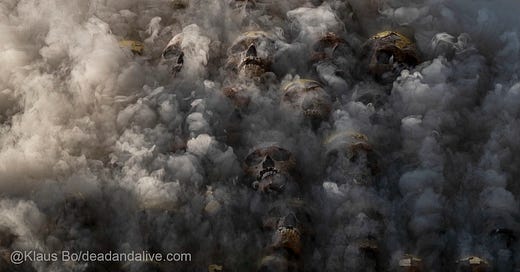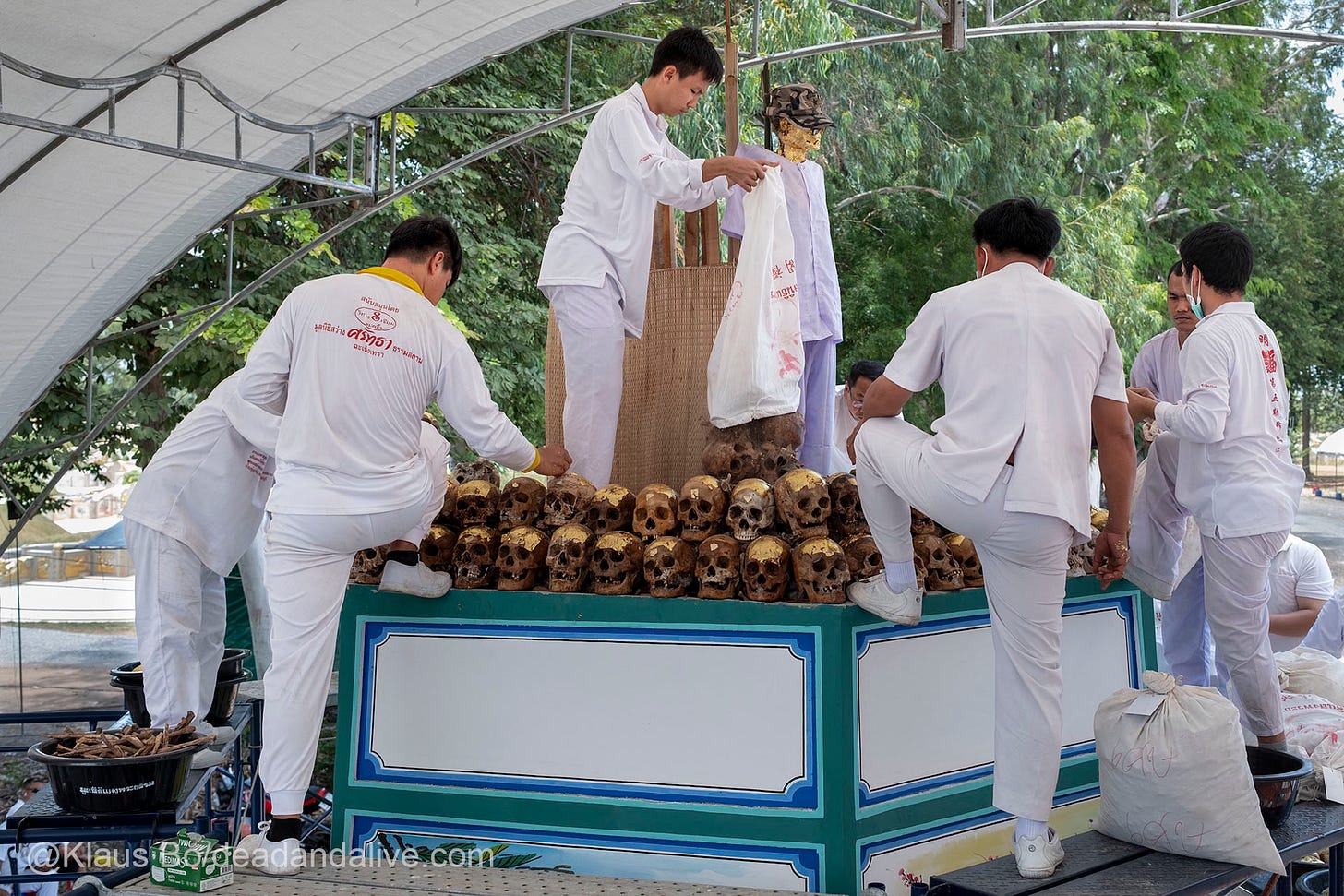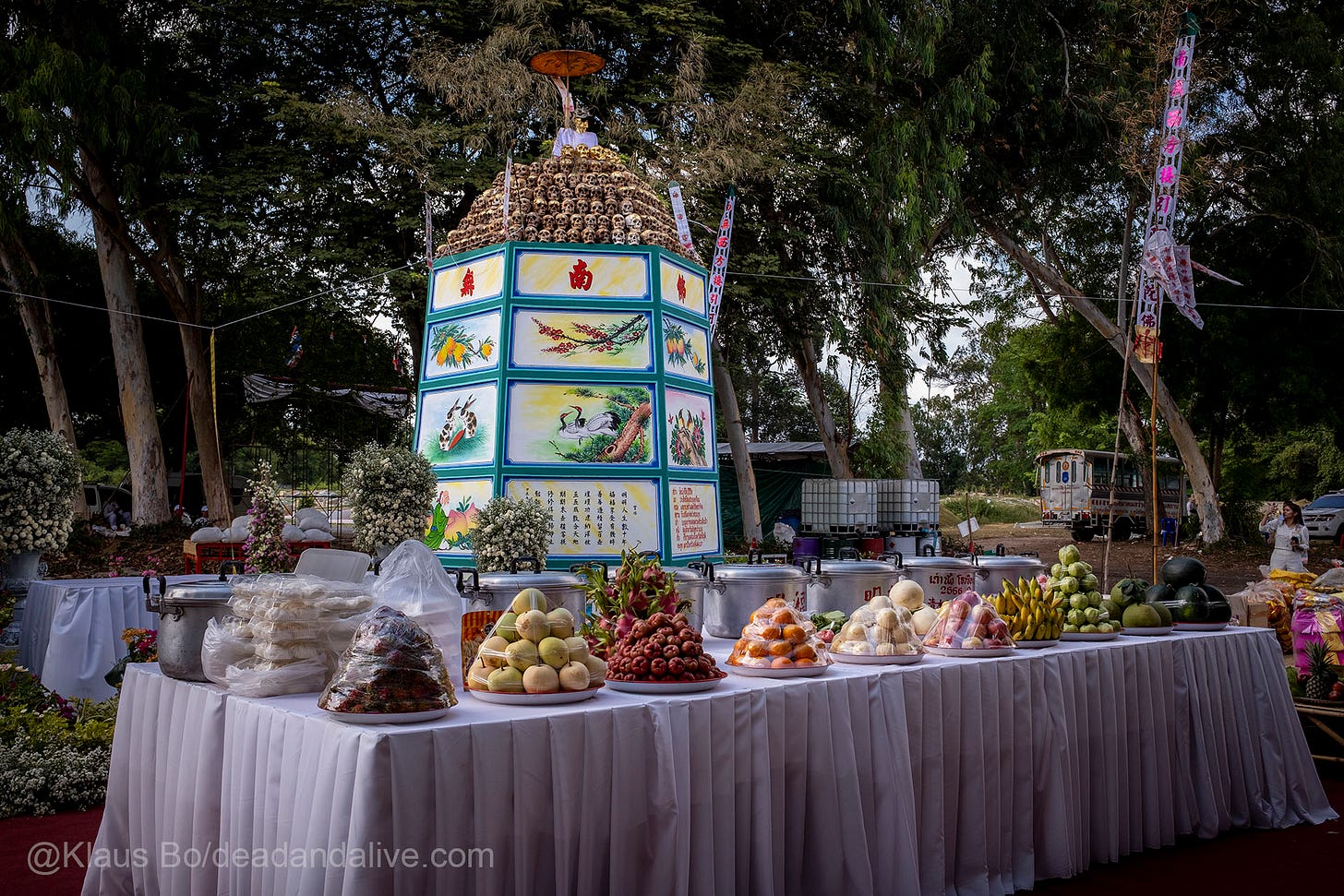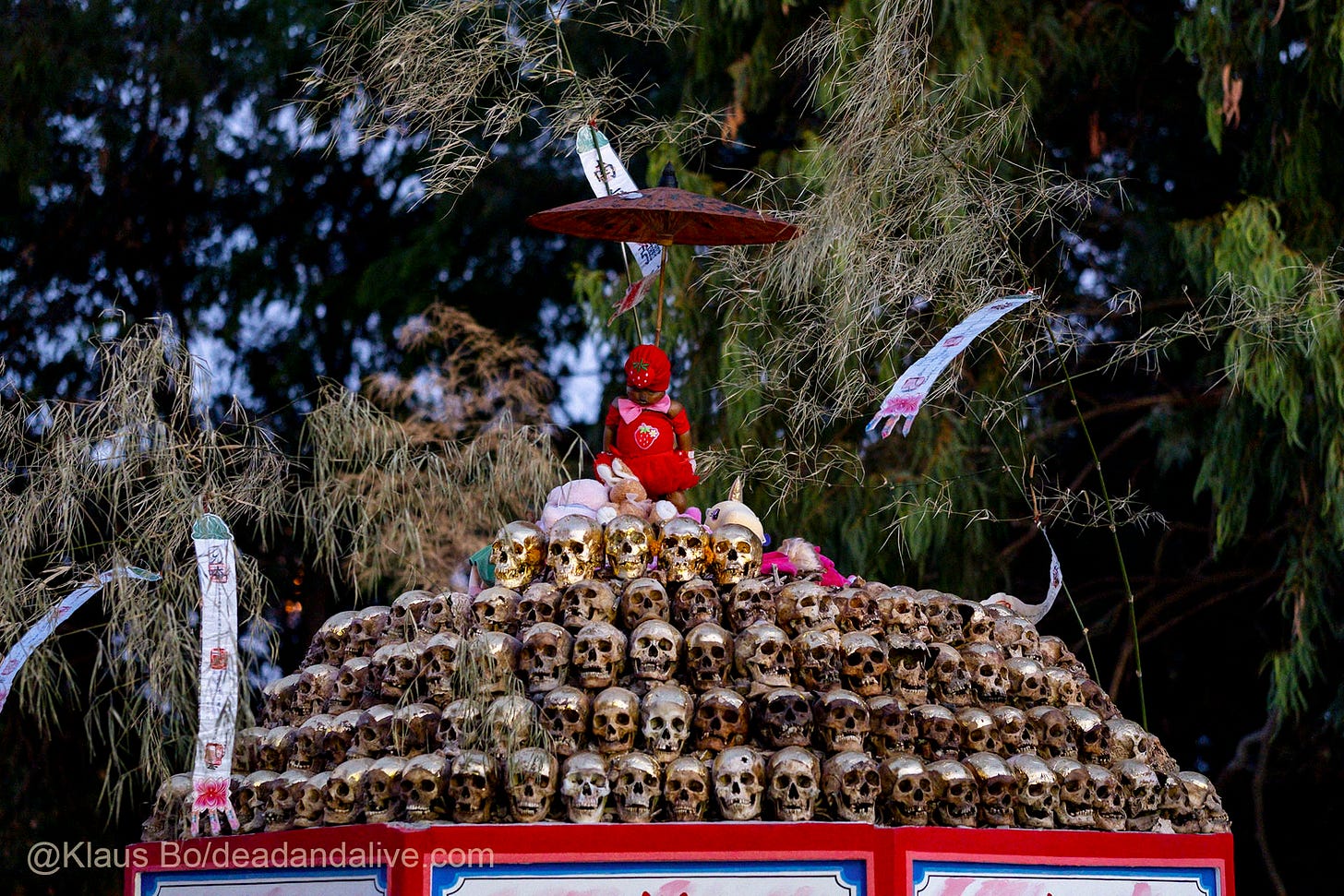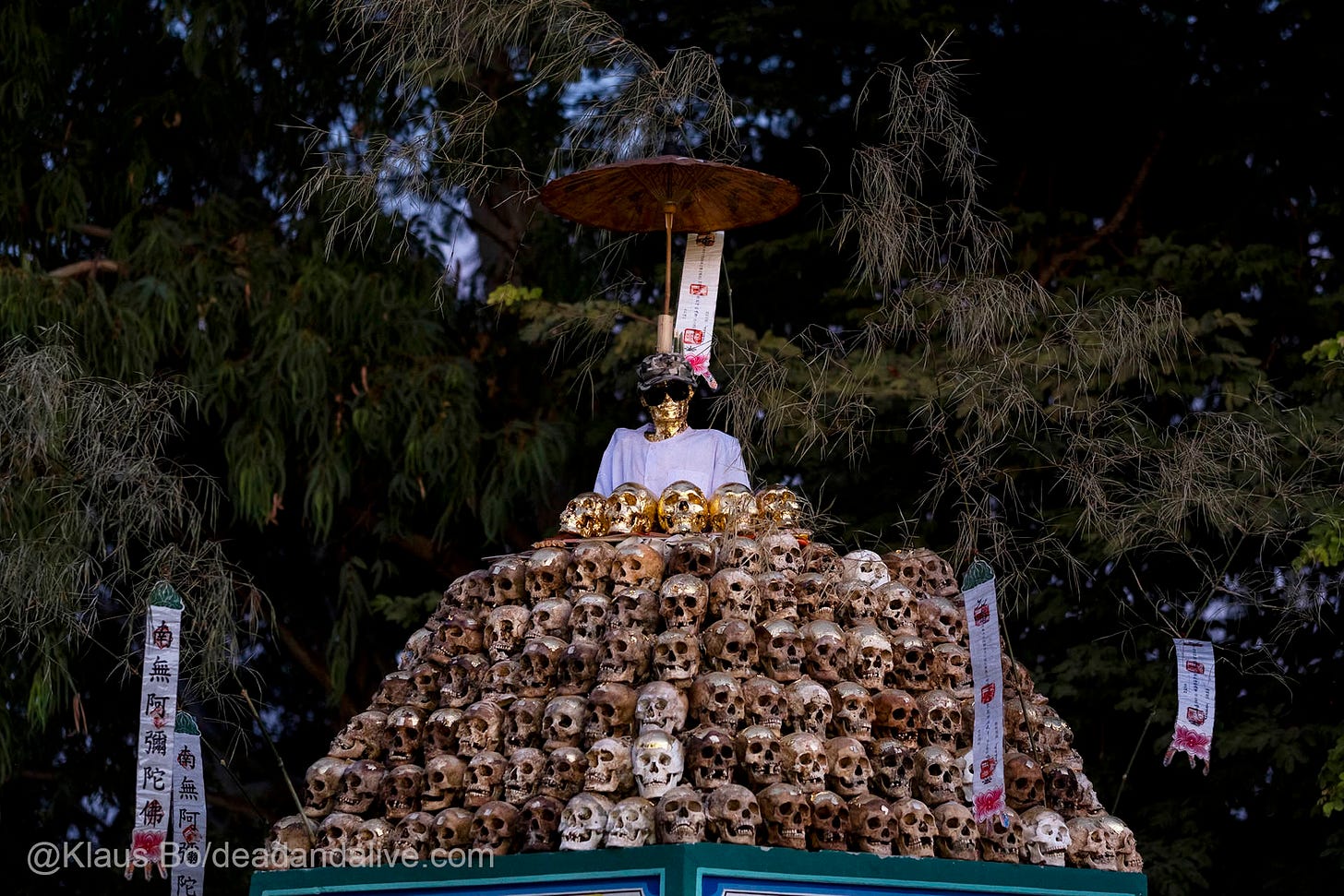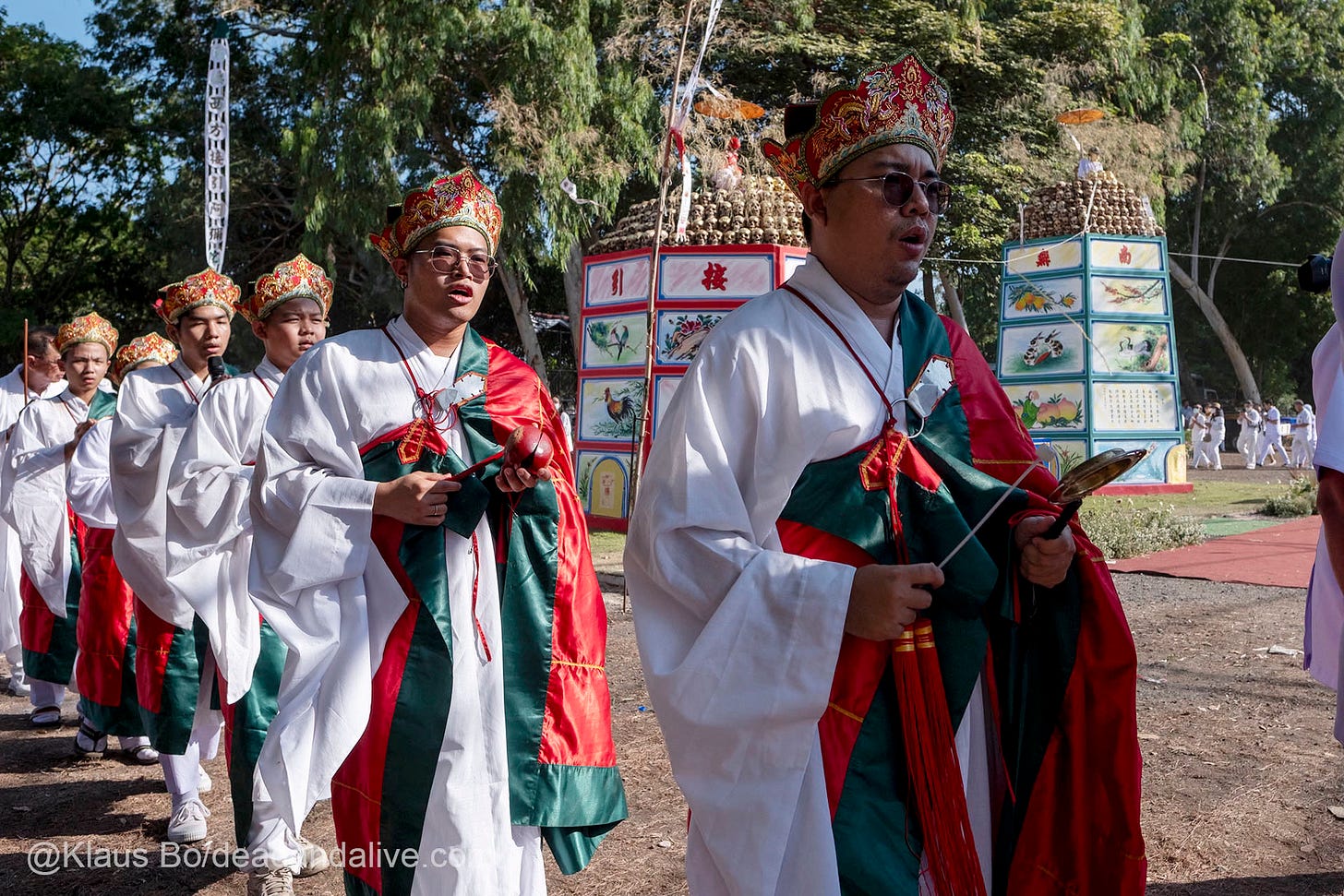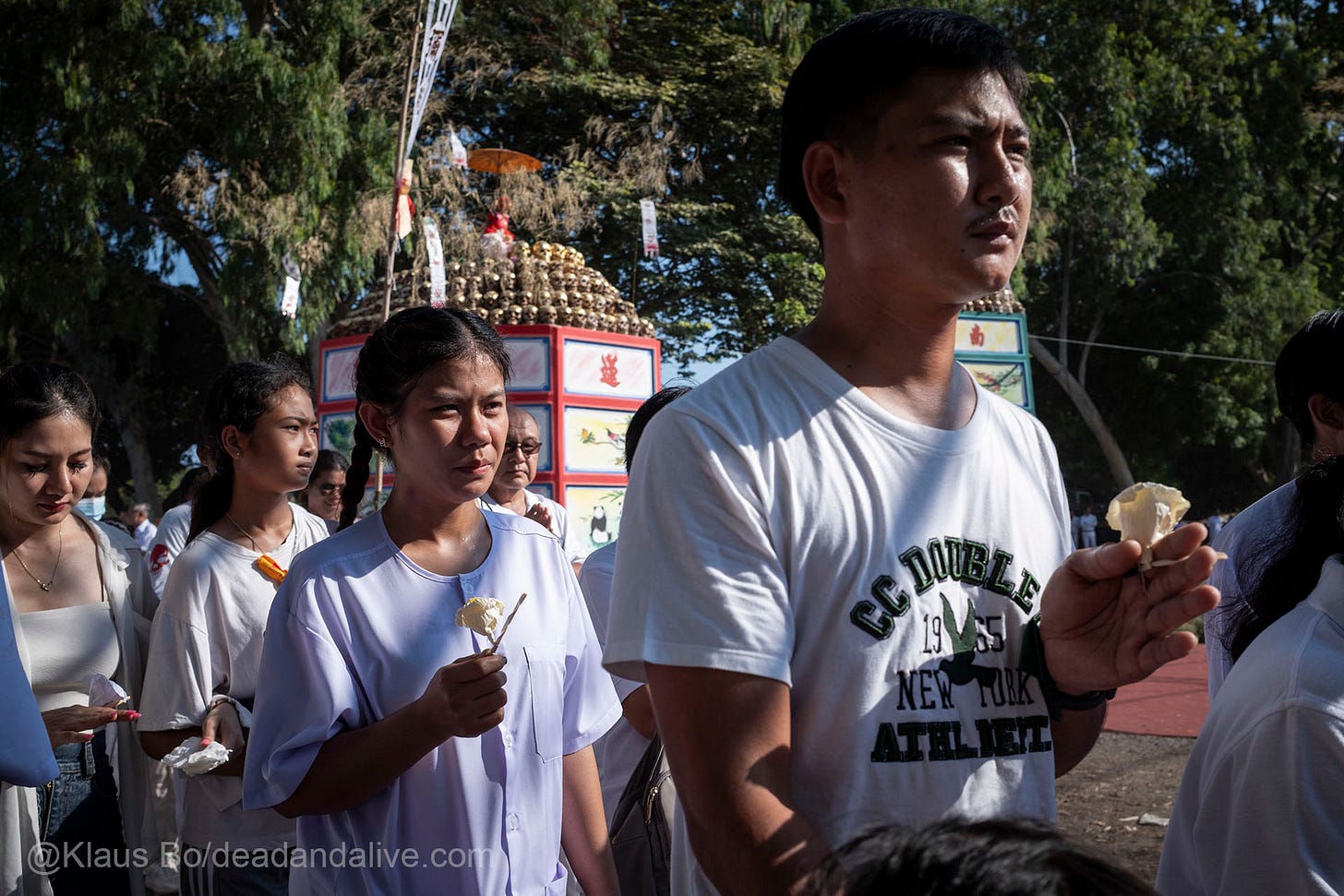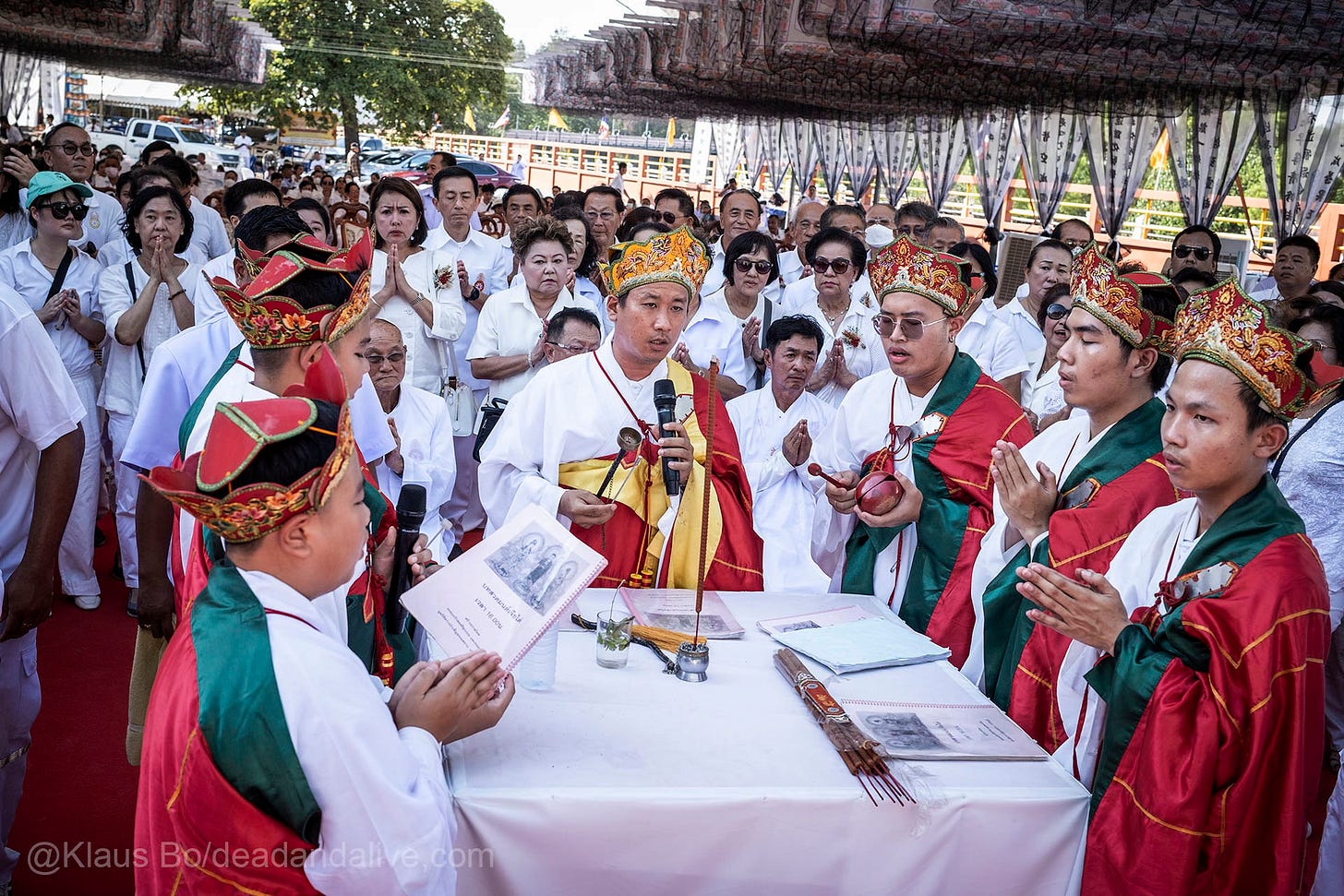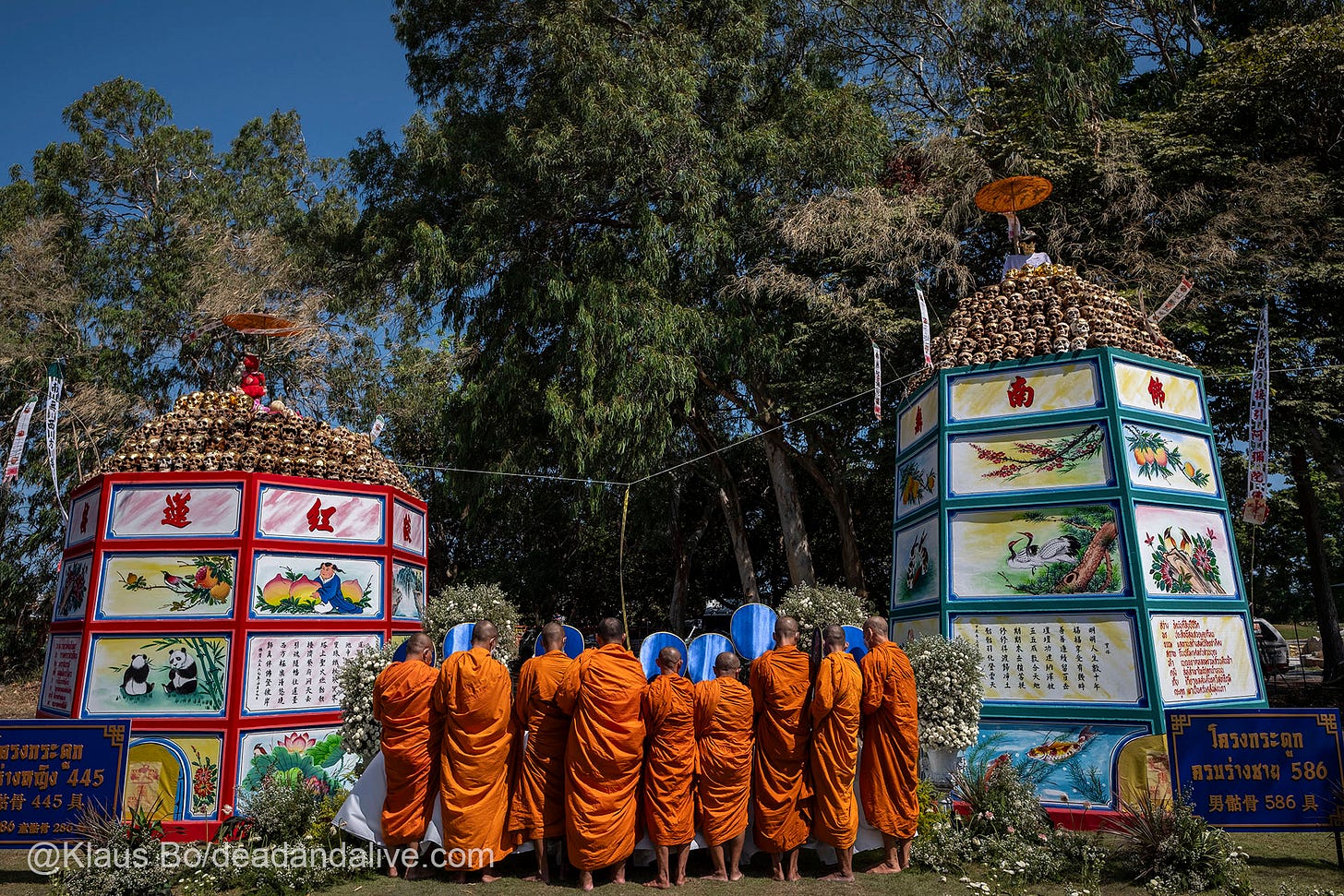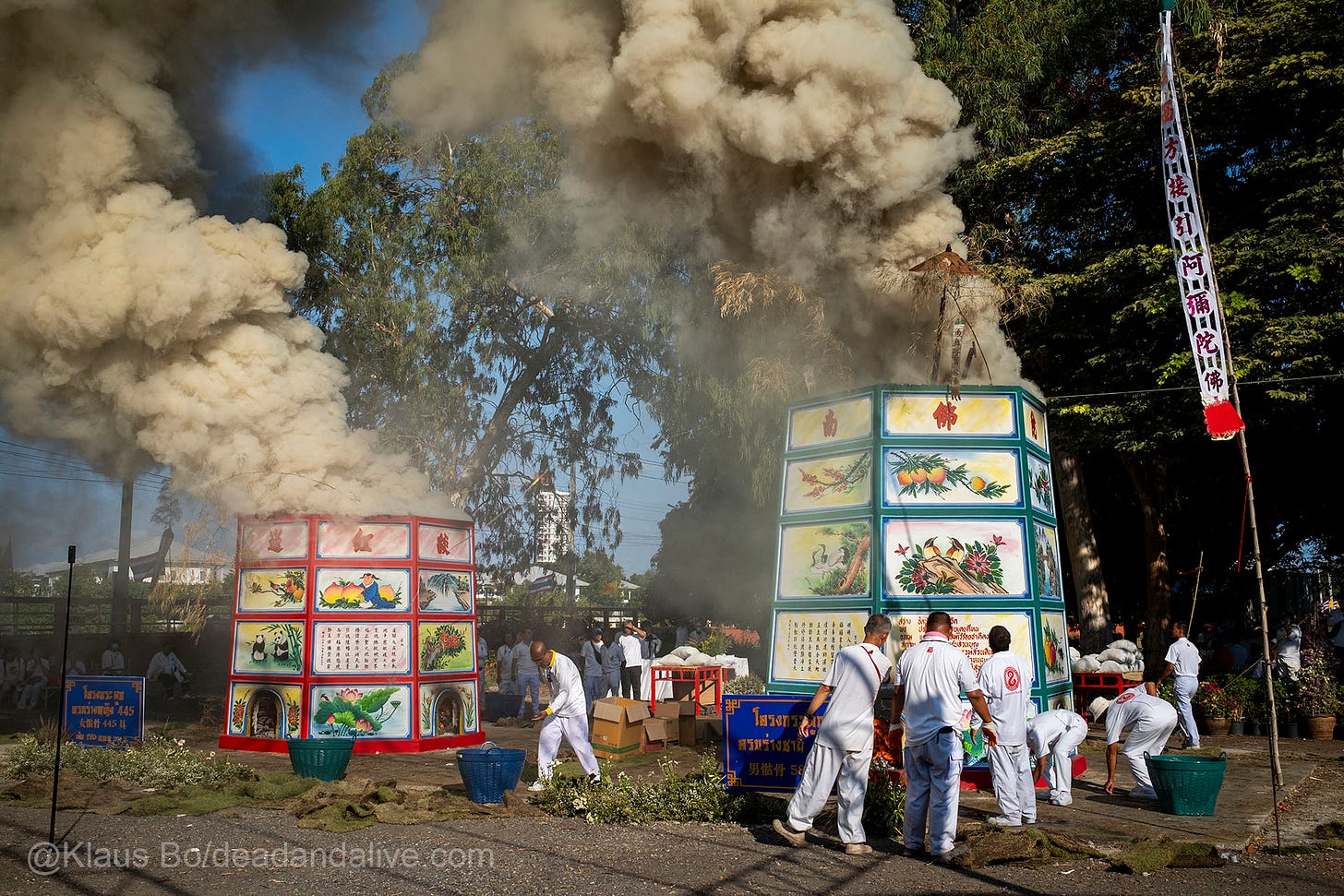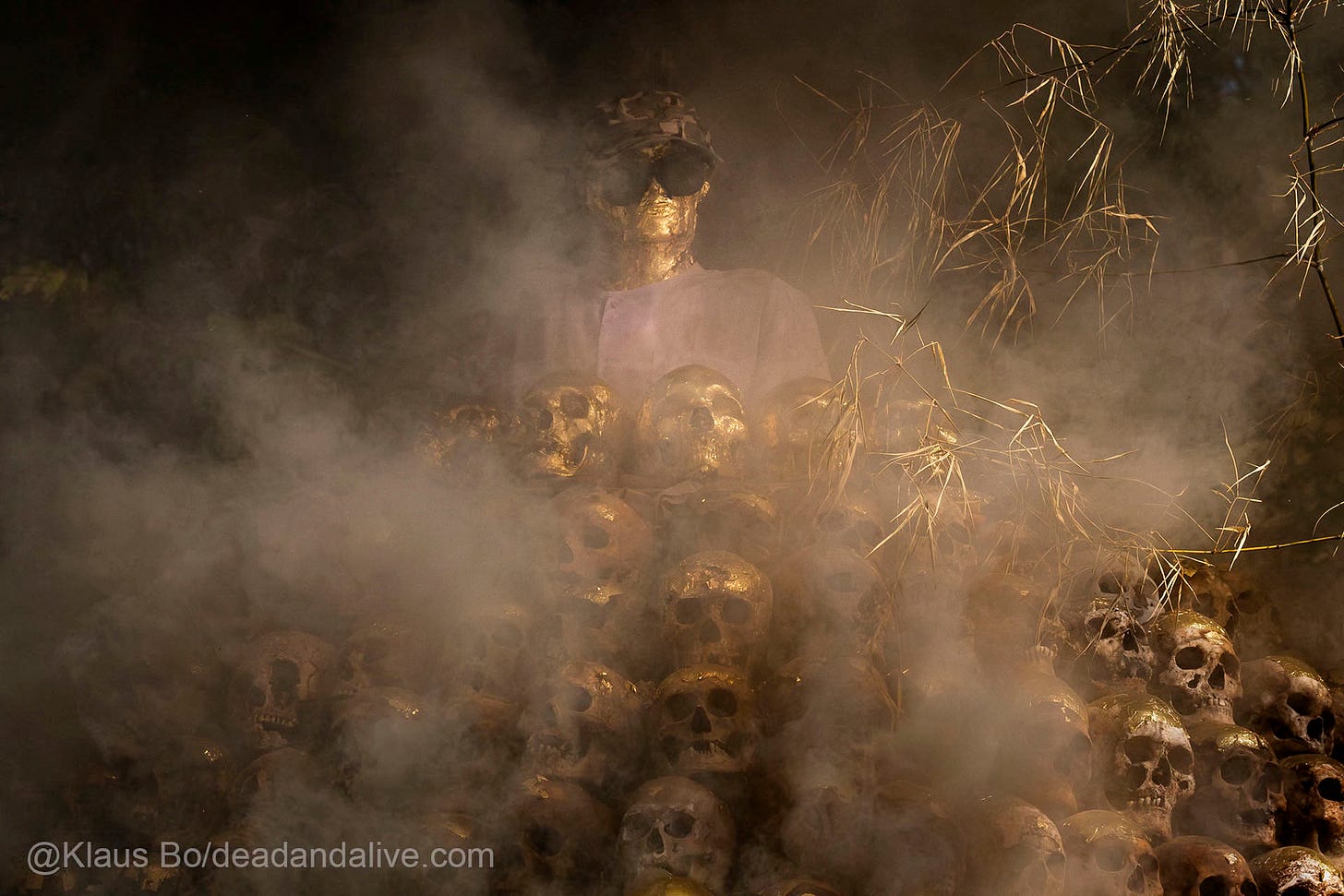Final Preparations for the Cremation
Before returning to Rayong, I spent a full day in Bangkok purchasing a longer lens to capture the cremation more closely—something my usual reportage lenses couldn’t quite manage.
The final stage of the Lang Pa Cha ritual unfolded over two days. On the first day, I documented the completion of the crematorium ovens—two massive structures, one for men and one for women. Volunteers worked tirelessly, constructing pyramids of skulls atop each oven while standing on scaffolding. The pyramids were covered to shield the workers from the intense sun as they arranged the skulls. Meanwhile, volunteers filled the bones of the deceased and skulls deemed defective into the cremation ovens, ensuring that all the unclaimed received their final farewell.
At the center of the male pyramid, the mummified man, adorned with gold, was placed, signifying his role as a spiritual guide for the unclaimed men. On the female side, Bibim was positioned, guiding the unclaimed women.
Later, the golden skulls were prominently positioned near the mummified figures, further emphasising their role in leading the spirits to the afterlife.
The Final Procession
With the cremation ovens completed and the skull pyramids in place, the final day of the Lang Pa Cha ritual began. Monks, volunteers, and community members gathered for the last farewell to the unclaimed souls.
At the cremation site, the procession circled the ovens, a ritual act of reverence and spiritual transition. The monks led the way, chanting prayers, followed by volunteers and attendees carrying flowers and incense. The atmosphere was solemn yet filled with deep reverence, as participants paid their final respects to the deceased.
As the ritual reached its culmination, final prayers and blessings were offered. The golden skulls, the mummified man, and Bibim stood prominently within the pyramids, marking the last transition before the fire was lit—the final step in guiding the unclaimed souls to peace.
The Cremation
As the final prayers concluded, the moment of cremation arrived—the ultimate farewell for the unclaimed souls.
Then, the fires were lit. Flames quickly engulfed the skull pyramids and the cremation ovens, sending thick plumes of smoke into the sky. The heat was intense, and within moments, the golden skulls, the mummified man, and Bibim were shrouded in dark smoke.
Despite the chaotic movement of the flames, the ritual retained its deep sense of reverence. The transformation of earthly remains into ash symbolised liberation, purification, and the final passage into the afterlife.
I had prepared for this moment. Armed with my new telephoto lens, I managed to capture some of the most striking images of the entire ritual—photographs that reflected both the intensity of the fire and the profound spirituality of the ceremony.
As the flames consumed the last physical remnants of the unclaimed, the Lang Pa Cha ritual reached its final act.
Closing Thoughts
The Lang Pa Cha ritual is an extraordinary tradition—one of reverence, community, and profound respect for the dead. Witnessing this final moment was deeply moving. It was a farewell unlike any other, yet one that ensured no soul was forgotten.

